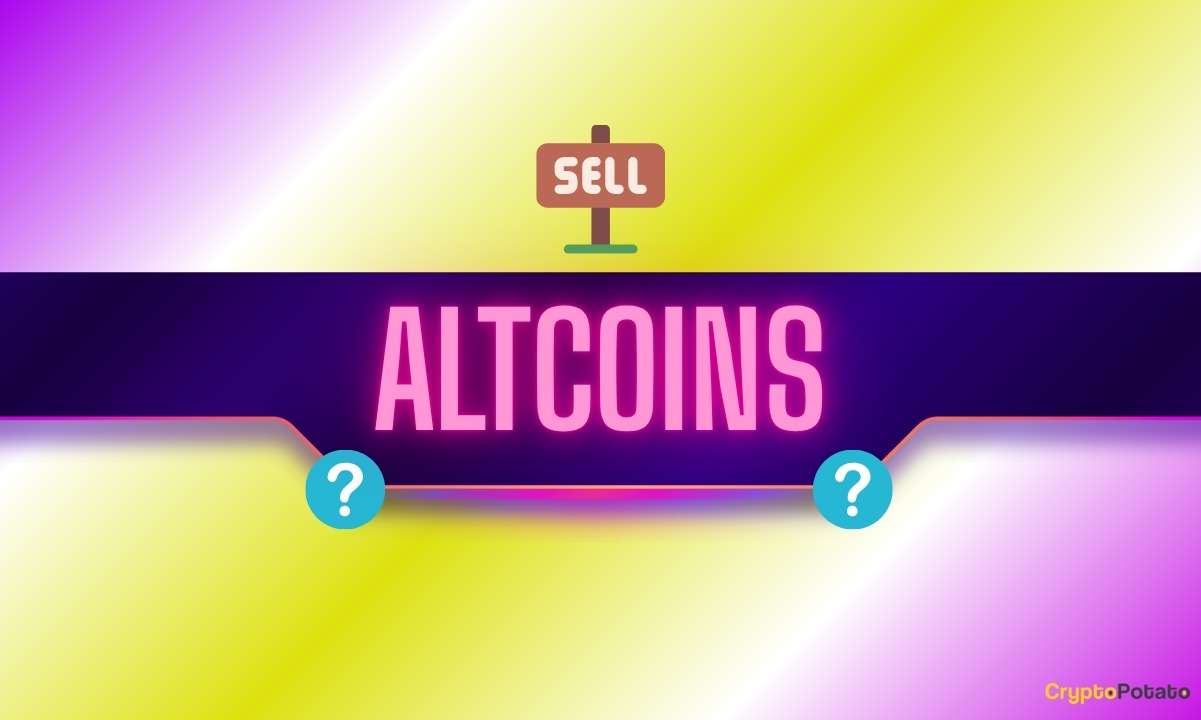Cryptocurrency
BEVM Unveils Groundbreaking Taproot Consensus for Decentralized Bitcoin Layer 2 Solution

[PRESS RELEASE – Cardiff, 英国, May 26th, 2024]
On May 20, 2024, the Bitcoin Layer2 development team BEVM released the technical yellow paper titled “Taproot Consensus: A Decentralized BTC Layer2 Solution.” This paper details the implementation of Taproot Consensus, leveraging native Bitcoin technologies such as Schnorr signatures, MAST, and Bitcoin SPV nodes to build a fully decentralized BTC Layer2 solution. Taproot Consensus represents a significant leap in native Bitcoin scalability, combining existing Bitcoin technologies innovatively without modifying Bitcoin’s core code.
I. History of Bitcoin’s Technical Iterations
- October 31, 2008: Satoshi Nakamoto published “Bitcoin: A Peer-to-Peer Electronic Cash System,” introducing Bitcoin and the concept of SPV (Simple Payment Verification).
- January 3, 2009: Nakamoto mined the Genesis Block, launching Bitcoin. The original code used ECDSA for digital signatures instead of the more suitable Schnorr signatures, which were under patent protection at the time. Schnorr signatures retain all the functionalities and security assumptions of ECDSA and can surpass the 15-signature limit of ECDSA, enabling the management of Bitcoin with thousands of addresses without affecting signing speed.
- 2018: Bitcoin core developers proposed integrating Schnorr signatures into the Bitcoin network.
- November 14, 2021: The Taproot upgrade integrated Schnorr signatures and introduced MAST (Merkelized Abstract Syntax Trees), enabling smart contract-like capabilities and decentralized multi-signature management.
- The Taproot Consensus solution by BEVM builds on these advancements, combining Schnorr signatures and MAST to manage multi-signature addresses and enable complex business scenarios in Bitcoin Layer2.
II. Overview of the Taproot Consensus Solution:
The yellow paper begins by highlighting Bitcoin’s non-Turing complete nature and limited functionality for smart contracts. It argues for using Bitcoin’s existing capabilities to build a decentralized Layer2 solution rather than modifying Bitcoin Layer1.
BEVM’s Taproot Consensus combines Bitcoin’s Taproot technology (Schnorr signatures and MAST), Bitcoin SPV light nodes, and the BFT PoS consensus mechanism to create a decentralized and consistent Layer2 network.
III. Detailed Explanation of Taproot Consensus Architecture
The Taproot Consensus architecture comprises three main components: Schnorr+MAST, Bitcoin SPV, and Aura+Grandpa.
· Schnorr+MAST: Uses these technologies from the Taproot upgrade to achieve decentralized Bitcoin multi-signature management driven by Bitcoin code.
· Bitcoin SPV: Allows synchronization and verification of Bitcoin transactions without running a full node.
· Aura + Grandpa: Advanced PoS consensus protocols for Byzantine fault tolerance, ensuring high consistency among network nodes.
In the BEVM system, each validator holds a BTC private key for Schnorr signatures. The aggregated public key forms a MAST tree, enabling BTC transfers and inscriptions to the threshold signature address. Validators act as Bitcoin SPV light nodes, synchronizing the BTC network state securely and permissionlessly. Aura+Grandpa ensures the Layer2 network’s security and trustworthiness, with assets managed by BFT consensus.
The operating principle of Taproot Consensus is: “In the BEVM system, each validator holds a BTC private key for Schnorr signatures. The characteristic of Schnorr signatures enables efficient signature aggregation, thereby enhancing the system’s security and efficiency. The aggregated public key Pagg, generated through the Musig2 multi-signature scheme, forms a large MAST (Merkle Abstract Syntax Tree). After generating the root hash of the MAST tree, validators perform BTC transfers and inscriptions to the threshold signature address generated by the MAST tree, enabling the submission of data from the BTC mainnet to the BEVM network. Each validator also acts as a Bitcoin SPV (Simplified Payment Verification) light node, allowing them to securely and permissionlessly synchronize the BTC network state.”
IV. Other Technical Details in the Yellow Paper – True Decentralization
The yellow paper also details the implementation of Schnorr signatures, MAST, Bitcoin SPV light nodes, and Aura+Grandpa, providing a comprehensive technical outline for those interested in Bitcoin technologies. It explains the Musig2 implementation and contrasts with other BTC Layer2 projects like Mezo, which uses the tBTC protocol. Unlike tBTC, which relies on a network of nine signatories, Taproot Consensus integrates multi-signature networks with BFT PoS consensus, achieving true decentralization.
Moreover, the yellow paper explains the implementation process of Musig2 and the differences between other BTC Layer2 projects like Mezo and Taproot Consensus. Mezo’s underlying technical structure is based on the tBTC protocol, which uses Bitcoin multi-signature to construct a threshold signature network, offering strong consistency compared to traditional distributed networks. However, tBTC still relies on a network of nine signatories, whereas a truly decentralized system should be consensus-driven, combining multi-signature networks with BFT PoS (Byzantine Fault Tolerance Proof of Stake) consensus mechanisms. This is the difference between distributed networks and blockchains; distributed networks emphasize distribution but lack Byzantine fault-tolerant consensus, whereas blockchains, while also being distributed networks, are driven by Byzantine fault-tolerant consensus, achieving true decentralization. The Taproot Consensus solution adopts this more advanced design. By integrating Schnorr signatures, MAST, Bitcoin SPV light nodes, and Aura and Grandpa Byzantine fault-tolerant consensus mechanisms, it constructs a highly consistent and secure decentralized Layer2 scalability solution. This integration enhances the scalability and usability of the Bitcoin network and ensures the security and consistency of the BEVM network.
Conclusion
The BEVM team’s technical yellow paper comprehensively describes Taproot Consensus, a Bitcoin Layer2 solution built entirely on native Bitcoin technologies. It respects and innovates on Bitcoin’s original technological direction, making it a true evolution of native Bitcoin scalability technology. As the Bitcoin ecosystem evolves, solutions like Taproot Consensus will be crucial for its development, serving as major cornerstones for truly decentralized Bitcoin Layer2 solutions.
About BEVM
BEVM is the first fully decentralized, EVM-compatible Bitcoin Layer 2 solution. It allows Ethereum ecosystem DApps to operate on Bitcoin, using BTC as gas. BEVM enhances Bitcoin’s utility by providing a secure and scalable platform for decentralized applications. The system integrates advanced consensus mechanisms, cross-chain interaction, and robust data integrity to ensure a seamless experience. BEVM aims to innovate within the Bitcoin ecosystem by offering increased scalability, security, and compatibility with popular Ethereum tools and applications.
For more information, users can visit BEVm’s official website or follow BEVM on Twitter.
Binance Free $600 (CryptoPotato Exclusive): Use this link to register a new account and receive $600 exclusive welcome offer on Binance (full details).
LIMITED OFFER 2024 at BYDFi Exchange: Up to $2,888 welcome reward, use this link to register and open a 100 USDT-M position for free!
Cryptocurrency
Popular Trader Dumps 5 Altcoins to Focus on Meme Coins With 100X Potential

TL;DR
- One well-known crypto trader sold TIA, ONDO, and other holdings to chase major gains in the meme coin niche – a move that sparked both support and skepticism across the crypto community.
- Despite Bitcoin’s dominance above 64%, some analysts believe an altseason is near, with low-cap tokens such as HNT and ONDO expected to lead the charge.
Cashing Out
While talk of an upcoming altseason continues to buzz across the crypto space, popular X user Crypto Beast has decided to offload some of their bags. The trader revealed the sell-off occurred on July 7 and included the tokens Celestia (TIA), Ondo (ONDO), Ethena (ENA), Quant (QNT), and Pyth Network (PYTH).
It is worth mentioning that all of the aforementioned have posted some gains on a 24-hour scale. TIA leads the charge with a spike of around 10%, while the rest have recorded more modest increases.
The crypto enthusiast claimed the sold altcoins have utility but questioned whether this is needed in the space. “They’re good for one thing: making VCs richer,” they added.
Crypto Beast has now shifted focus to hunting meme coins with 100x potential. Some X users commenting on the post supported the decision, stressing the importance of profit-taking. Others, though, wondered why the trader would prioritize meme coins, considering the hype for these tokens had significantly reduced in the past several months.
Recall that the sector was booming towards the end of last year, with its total market cap surging past $120 billion. Currently, the capitalization stands at less than $60 billion (per CoinGecko’s data).
Was This the Right Time?
Bitcoin (BTC) continues to outperform its rivals, and as of this writing, its market dominance is beyond 64%. However, multiple industry participants believe the altcoins have yet to catch up with the biggest cryptocurrency and steal the show.
X user Chiefy predicted that the next altcoin “super-cycle” will start in July. “This time, low caps will pump 175x and ignite the most powerful altseason,” they forecasted. The analyst thinks Sui Network (SUI), Helium (HNT), Render (RENDER), Filecoin (FIL), and Ondo (ONDO) are among the top contenders for explosive rallies.
It’s worth noting, though, that SUI should not be placed in the same ‘low-cap’ category, as it’s the 15th-largest cryptocurrency with a market cap of over $10 billion.
Carl Moon – an X user with over 1.5 million followers – chipped in, too. He claimed that the altcoins “will go parabolic” once the combined market capitalization of all digital assets (excluding BTC and ETH) soars above $1.15 trillion. Currently, the figure stands well below $1 trillion.
Binance Free $600 (CryptoPotato Exclusive): Use this link to register a new account and receive $600 exclusive welcome offer on Binance (full details).
LIMITED OFFER for CryptoPotato readers at Bybit: Use this link to register and open a $500 FREE position on any coin!
Cryptocurrency
GUNZ Announces $GUN Token Expansion to Solana

[PRESS RELEASE – Robinson Point, Singapore, July 7th, 2025]
GUNZ, the L1 blockchain ecosystem that powers the groundbreaking AAA game Off The Grid (OTG), today announced the expansion of its $GUN token to the Solana blockchain. This strategic move brings part of the $GUN token’s circulating supply to Solana, enhancing accessibility for U.S. (and global) users while reinforcing GUNZ’s leadership in the blockchain gaming sector. On the 10th of July $GUN lands on Solana, bringing lightning-fast access and next-gen infrastructure to a whole new wave of gamers and community members.
Strategic Alignment with Solana: A Multi-Chain Vision
Under the bold banner, “$GUN is Coming to Solana,” GUNZ is embracing Solana’s high-speed, low-cost blockchain infrastructure and robust ecosystem to amplify its multi-chain strategy, aptly summarized as “Too Big for One Chain.” This move represents the latest step in a clear multichain strategy, setting the stage for additional expansions to other prominent blockchains in the future. The bridging process to Solana will be facilitated by LayerZero, a leader in blockchain interoperability and seamless cross-chain transactions.
Currently, $GUN is available on multiple blockchains and platforms, including GUNZ Layer 1 and AVAX C-chain.
This alignment radically increases accessibility to the token and unlocks new opportunities for partnerships, campaigns, and community engagement by leveraging Solana’s global reach.
To celebrate this milestone, GUNZ will launch a limited-edition Solana-themed NFT content pack. Details on how to claim this exclusive offering will be announced soon, adding excitement for the growing Off The Grid community.
Off The Grid and the GUNZ Ecosystem: A Clarified Vision
GUNZ is renowned for Off The Grid, the first AAA game with an onchain economy, available across platforms like Epic Games Store, Xbox, PlayStation, and soon Steam. Within OTG, the $GUN token serves as a utility token, enabling players to purchase in-game items, engage in asset trading, and participate in blockchain-powered gameplay interactions. Following the Solana integration, players will be able to deposit Solana-based $GUN directly into their in-game wallet, enabling fast, reliable, and convenient transactions within OTG’s immersive digital economy.
With over 17 million wallets registered in the GUNZ ecosystem, GUNZ is poised for strong growth. This milestone will boost ecosystem activity and token utility.
Leadership Perspective
“Launching $GUN on Solana reflects our long-term commitment to building a truly global, player-first ecosystem,” said Vlad Korolov, CEO at Gunzilla Games. “Solana’s speed and scalability allow us to reach new communities with greater efficiency and reliability. This is more than a technical upgrade—it’s a major step toward making blockchain gaming seamless, inclusive, and ready for the mainstream.”
Looking Ahead
GUNZ is set to share additional updates in the coming weeks, including details on the highly anticipated Steam release of Off The Grid and further global token availability. As the ecosystem gears up for mass adoption, the crypto community is encouraged to stay tuned for announcements that will solidify GUNZ’s position as a trailblazer in blockchain gaming.
Risk & Regulatory Disclosure
$GUN is an in-game utility asset. It has not been registered, qualified, or approved as a security, capital-markets product, or digital payment token in any jurisdiction. No regulator has reviewed this material. This release is not an offer, solicitation, or investment advice, and $GUN is not offered to U.S. persons. The token’s value may fall to zero and is not covered by investor-compensation schemes (including those under EU MiCAR). Always verify eligibility before acquiring or using $GUN.
About Gunzilla
Founded in 2020, Gunzilla Games is an independent AAA video game developer and publisher behind Off The Grid — a groundbreaking battle royale now live on PC, PlayStation, and Xbox. Gunzilla is also the creator of GUNZ, a gamer-first blockchain ecosystem, and the proud owner of Game Informer, the largest gaming media outlet.
Driven by a passion for innovation, Gunzilla is dedicated to pushing the boundaries of what’s possible in gaming—delivering cutting-edge experiences that empower players, developers, and the industry as a whole.
For more information, users can visit GunzillaGames.com.
Official X of Gunzilla Games – https://x.com/GunzillaGames
Official X of GUNbyGUNZ – https://x.com/GUNbyGUNZ
Official X of Off The Grid – https://x.com/PlayOffTheGrid
Binance Free $600 (CryptoPotato Exclusive): Use this link to register a new account and receive $600 exclusive welcome offer on Binance (full details).
LIMITED OFFER for CryptoPotato readers at Bybit: Use this link to register and open a $500 FREE position on any coin!
Cryptocurrency
Ethereum Eyes 16.7M Gas Cap Under Vitalik Buterin’s New Proposal

Ethereum co-founder Vitalik Buterin and Ethereum Foundation researcher Toni Wahrstätter have proposed a ceiling on how much gas a single transaction can use, and aim to tighten security while preserving efficiency as the protocol matures.
The draft proposal, EIP-7983, sets a 16.77 million gas limit per transaction. Interestingly, this is a significant change from the current architecture, where a single transaction can consume an entire block’s gas allowance.
Developers argue this open-ended design exposes Ethereum to denial-of-service (DoS) risks, inconsistent network load, and slower block verification, especially as the chain supports increasingly complex DeFi and zero-knowledge applications.
EIP-7983
By introducing a hard cap, Buterin and Wahrstätter seek to enforce more predictable resource usage without significantly disrupting typical user activity, noting that most transactions currently fall well below the proposed threshold.
Transactions of more than the 16.77 million gas cap would be rejected during validation. Such a move would ensure oversized transactions cannot enter blocks, while the block gas limit itself would remain adjustable by validators under existing consensus rules.
The authors frame the move as part of a broader effort to simplify Ethereum’s base layer and improve network reliability, which essentially echoes Buterin’s recent calls to streamline protocol design inspired by Bitcoin’s minimalist ethos.
Easing zkVM Constraints
Developers working on zkVMs and parallel execution engines have highlighted difficulties in handling transactions with unpredictable gas sizes. They believe a fixed ceiling could ease engineering constraints and allow better subdivision of workloads across threads.
The cap is also expected to reduce the risk of any single transaction monopolizing block resources, thereby improving consistency in execution times and block propagation. While the proposed limit may require some large deployments to split transactions into smaller segments, it aligns with Ethereum’s longer-term goal of supporting modular and provable systems while maintaining user experience.
EIP-7983 builds on the now-stagnant EIP-7825 but with a lower ceiling. The proposal is currently in draft status and is now open for community discussion as developers assess its practical impact on the network.
Binance Free $600 (CryptoPotato Exclusive): Use this link to register a new account and receive $600 exclusive welcome offer on Binance (full details).
LIMITED OFFER for CryptoPotato readers at Bybit: Use this link to register and open a $500 FREE position on any coin!

 Forex3 years ago
Forex3 years agoForex Today: the dollar is gaining strength amid gloomy sentiment at the start of the Fed’s week

 Forex3 years ago
Forex3 years agoUnbiased review of Pocket Option broker

 Forex3 years ago
Forex3 years agoDollar to pound sterling exchange rate today: Pound plummeted to its lowest since 1985

 Forex3 years ago
Forex3 years agoHow is the Australian dollar doing today?

 Cryptocurrency3 years ago
Cryptocurrency3 years agoWhat happened in the crypto market – current events today

 World3 years ago
World3 years agoWhy are modern video games an art form?

 Commodities3 years ago
Commodities3 years agoCopper continues to fall in price on expectations of lower demand in China

 Economy3 years ago
Economy3 years agoCrude oil tankers double in price due to EU anti-Russian sanctions



























